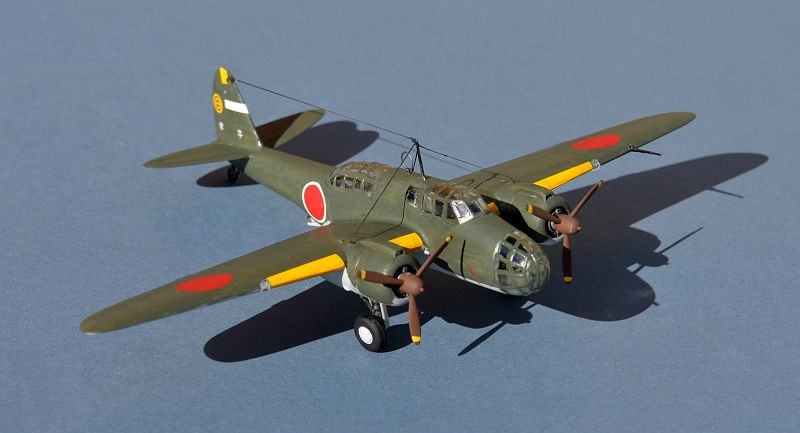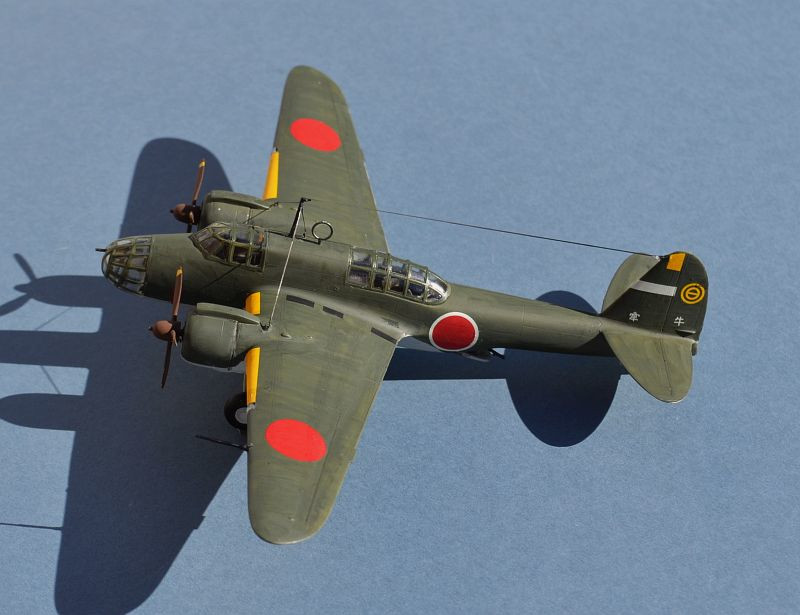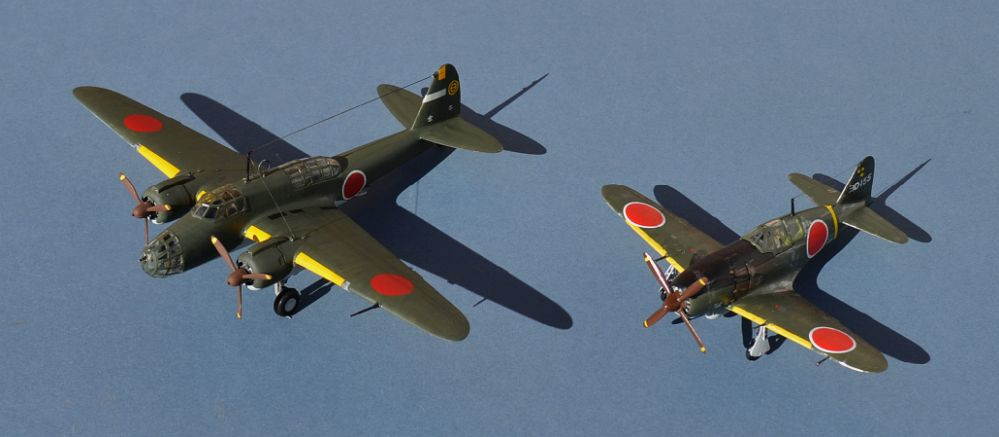Link to Website Index: 
Kawasaki Ki48-II Type 99 Light Bomber Sokei
Allied reporting name: Lily
90th Air Regiment, 3rd Sqn, Imperial Japanese Army Air Corps, Northern China 1943-44
Hasegawa (Mania)1/72 .
Link to Website Index: 
The Ki-48 Type 99 Shiki-souhatu-keibaku or "Sokei" design was commissioned by the
Imperial Japanese Army in 1937 to match the Soviet Tupolev SB-2 bomber that was beginning
to operate over China. Designed for a similar role to the Bristol Blenheim and Martin
Maryland, it was fast, had a good climb rate and long range. With a surprisingly
large crew of 5, it could also operate as a dive bomber, but it only carried a relatively
small 500 Kg bomb load (later 800kg), which severely limited its effectiveness.
In normal Japanese style, the Ki-48 sacrificed armour and self sealing fuel tanks
for performance, relying on speed for defence, although it did carry 3 machine guns.
Powered by two Nakajima HA115 radial engines of 940 hp each, it could achieve just
over 500 Km/h at 5,600 m height. Ki-48s entered service in 1940, operating initially
over China, but they continued successfully in service in Malaya, the Phillipines,
Burma and New Guinea until the Battle of Okinawa in April 1945, after which many
remaining aircraft were converted as Kamikaze aircraft or for testing and training
purposes.
The Ki-48s of the 90th Air Regiment, 5th Air Army, based in the occupied province
of Hebei near Beijing, was the only Japanese air unit to fight against the Soviet
Union, followinf their declaration fo wa rin 1945. It flew 20 sorties against Soviet
forces on 14 August 1945.
Kamikaze Ki-48s first saw action against the British Pacific Fleet off Palembang
in January 1945 during Operation Meridian, with all seven attacking aircraft being
shot down by the British carrier's Supermarine Seafires, assisted by Vought Corsairs
and Grumman Hellcats returning from the raids.
Building the Hasegawa Lily Kit:
This is an interesting kit of a type I really wasn't familiar with. Although branded
as Hasegawa, Scalemates tells me that this was originally a Mania kit, released in
1977. It wasn't excessively expensive and I haven't seen many of these around.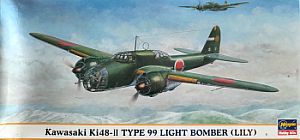
Detail is remarkably good, with fine recessed panel lines, plus a sure sign that
it is not of Hasegawa origin: a detailed cockpit ! The sprues are small and have
thin runners, similar to modern Roden kits. Some of the parts are very fine, which
normally means they risk breakage as you remove them from the sprue, but the plastic
seems to be reasonably soft and forgiving.
The cockpit has no less than 22 separate parts and once they are all fitted it is
quite crowded. Indeed, I did wonder if this kit is actually 1/72, or perhaps a smaller
1/75, as it looks a little underscale alongside my other models - the snug cockpit
and the small diameter engines Instruments/radio dials etc do give that impression.
However, My copy of Francillon gives the size of the real thing as 17.45m by 12.7
m, which scales out to 24.1cm by 17.6cm and the kit matches this exactly. Cabin instruments
are given as lightly raised details that need nothing more than a dry-brush sweep
to look satisfactory.


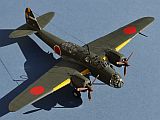
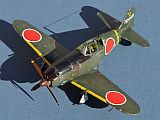
With this month’s other model build, a Mitsubishi Raiden (Jack):
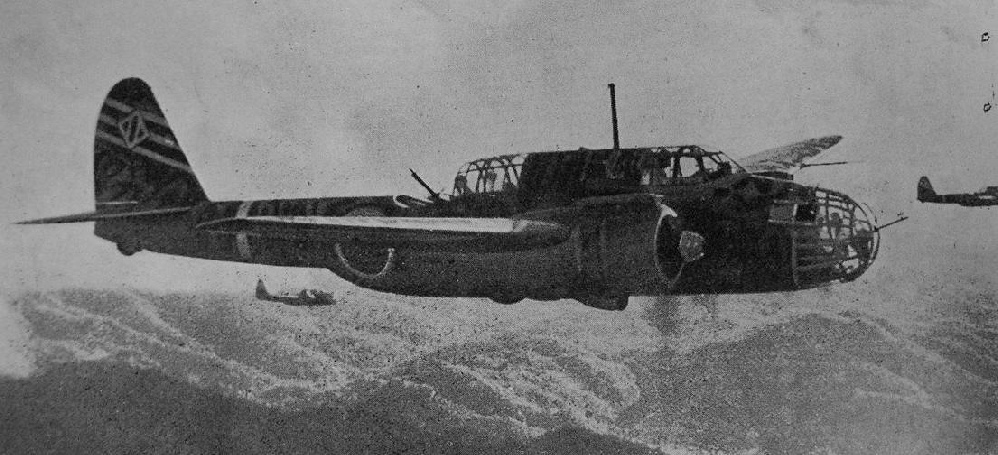
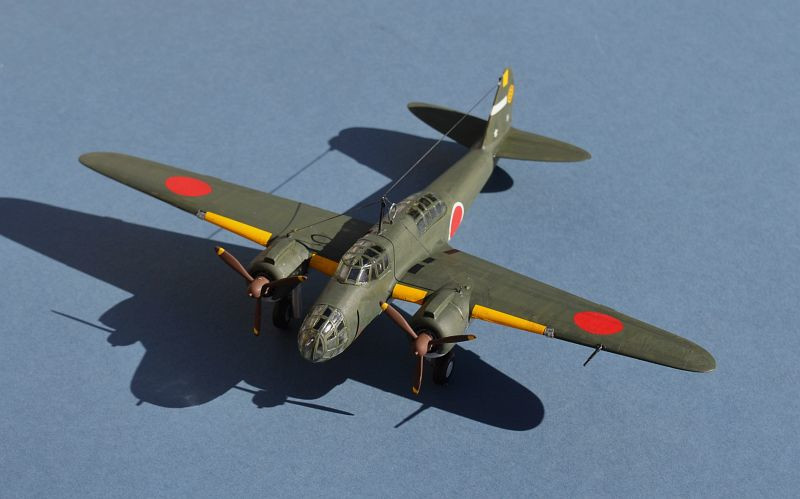
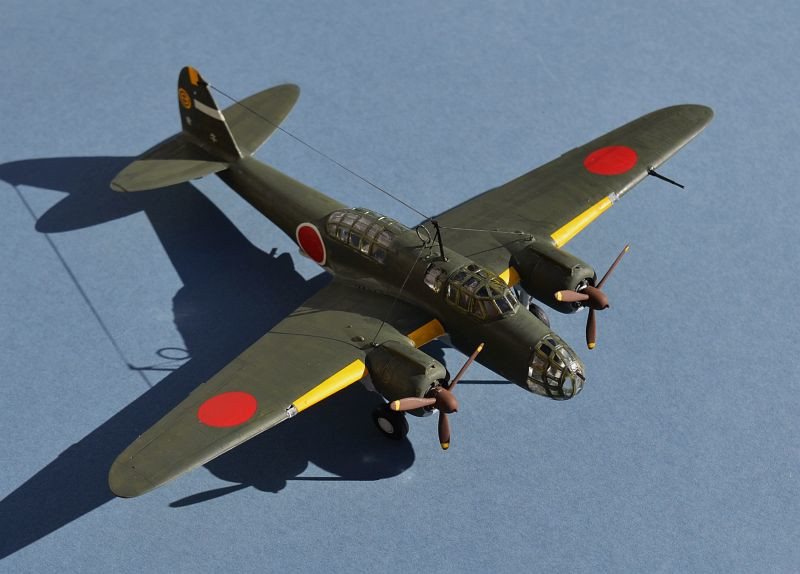
The engines are nicely detailed, with the two rows of cylinders assembled separately,
then a (fuel?) ring and a backing plate. Cowls are three parts, an approach that
can sometimes be difficult to assemble neatly, but these gave me no problems, although
there is potential for some confusion over the cowling orientation, with the large
and small intakes swapped top to bottom from earlier issues of this kit - which I
presume reflects engine changes on the real thing. As a result you need to fill the
bottom hole in the cowling and make a new one on the top. If, like me, you fail to
notice this step in the instructions and fit the cowl upside down, you end up with
the indentation for the exhaust in the wrong place. D'ooh !
Wing leading and trailing edges are especially thin and sharp. A plate to mount
the undercarriage needs to go inside the lower nacelle before assembly - unfortunately
this does not have any markings to show exactly where it should fit. I put mine
as far forward as it would go, not the place where it fits most snugly, but based
on the holes in the plate and the shape of the wheel well, I think I got it right.
Paint is Humbrol 75 and 127 (H75 seems to be a popular option for the darker IJN
and IJAAF green colours). I shied away from the more painstaking mottled camouflage
option in the decal sheet. I’ve only given the model some light weathering, since
Japanese Army aircraft don’t seem to have suffered the peeling paint problems so
typical of those operated by the Japanese Navy
Rather like the Arii Nell that I built back in June, this ex-Mania kit seems to be
another example of a superb representation of a Japanese WW2 aircraft, produced by
a Japanese kit manufacturer that we are not familiar with in the European market.
I can see why Hasegawa are happy to sell it in their boxes, as it matches and in
many ways exceeds their own high standards !

